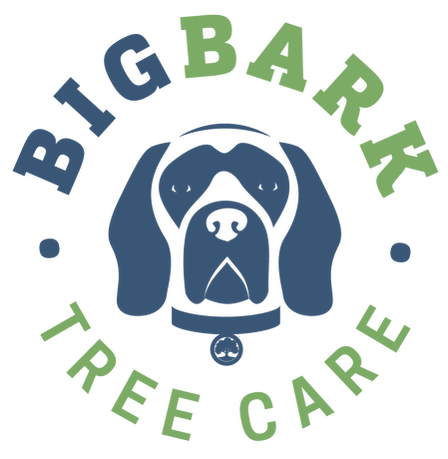|
Have you ever looked at a tree in your yard and thought, "Is it taking a really long nap, or has it shuffled off its mortal coil?" You're not alone! Many homeowners find themselves playing the arborist version of Sherlock Holmes, trying to deduce whether their tree is dead or just very, very relaxed. Here at Big Bark Tree Care, we're all about helping you solve these leafy mysteries—with a hint of humor (just a dash, we promise). The Great Tree Detective: How to Spot a Tree in the Afterlife 1. The Tale of the Silent Buds In the spring, trees should be bustling with activity, popping out buds faster than popcorn at a movie theater. If your tree is more on the "silent movie" end of the spectrum, it might be time to start worrying. A lack of leaves and buds is often the first sign that your tree might be auditioning for a role in "The Walking Dead: Arbor Edition." 2. The Scratch Test: Under the Bark Don your detective hat and gently scratch a small piece of bark from a branch. If you find green, congratulations! Your tree is alive and kicking. If it's brown and dry, well, it might be time to call in the professionals at Big Bark Tree Care. We promise to handle your tree with all the care of a beloved family pet (that doesn't need to be walked). 3. Branches: The Snap Judgment Try bending a few branches. If they snap with a sound reminiscent of eating crackers in a quiet library, they're dead. Living branches, on the other hand, are more flexible than a yoga instructor. Remember, if a branch snaps off and hits you, it might be the tree's way of reaching out for help (or it's just grumpy; trees can be moody, too). 4. Trunk Drama: A Story of Splits and Cracks Inspect the trunk for cracks, splits, and other novella-worthy drama. These signs can indicate a tree's internal struggle, much like reading a teenager's diary. Also, keep an eye out for fungi, which are the equivalent of a tree wearing too much cologne—it's trying to cover something up. 5. The Lean of Doom If your tree is leaning like it's trying to initiate a game of limbo, it might be unstable. This is the tree's last-ditch attempt to catch your attention—like a dramatic exit in a soap opera. At Big Bark Tree Care, we specialize in giving these trees a dignified exit, ensuring they don't accidentally take out your fence on their way down. 6. The Professional Touch: Big Bark Tree Care to the Rescue If all this detective work sounds like a lot, fear not! Big Bark Tree Care is here to take the magnifying glass out of your hand. We've got the expertise to determine if your tree is just being dramatic or if it's truly taken its final bow. Plus, we do it with a smile and the gentle touch of someone who whispers apologies to their plants when they forget to water them. The Final Leaf: When to Say Goodbye Saying goodbye to a tree can be tough. It's like parting with an old friend who's stood silently by your side, offering shade and shelter (and occasionally dropping leaves all over your lawn in a passive-aggressive move). But sometimes, it's necessary for the safety of your home and family. At Big Bark Tree Care, we don't just remove trees; we honor their memory by ensuring the rest of your garden thrives. And who knows? Perhaps there's room for a new sapling to write its own story in your yard—a story we'd be thrilled to help you start. So, if your tree is giving you the silent treatment, showing signs of decay, or just seems a bit too "dead" for your liking, give us a call. We'll bring our expertise, and our commitment to trees (both living and departed) to your doorstep. Remember, every tree has its day—some just need a little help finding their way out. Why Big Bark Tree Care?
Choosing Big Bark Tree Care isn't just about getting rid of a tree; it's about bringing balance to your backyard ecosystem. We're like the garden therapists you never knew you needed, offering services that extend beyond mere tree removal. Whether it's pruning to encourage growth, treating diseases, or offering advice on tree care, we're here to help your garden flourish. Planting the Future: Life After Tree Removal After saying goodbye to your leafy companion, consider the future. With Big Bark Tree Care, tree removal is just the beginning. We can advise on selecting the perfect replacement tree—one that matches your landscape, soil type, and climate. Think of it as a chance to redecorate your outdoor space, with us as your exterior designers. The Eco-Friendly Promise At Big Bark Tree Care, we're not just about removing trees—we're about preserving the environment. We ensure that every part of the tree is recycled or repurposed, from turning branches into mulch for gardens or composting. We believe in a no-waste approach, ensuring that even in death, trees can give back to the earth. Ready for a Help from a Leafy Hand? We understand that dealing with tree issues can be a daunting task. That's why we approach every job with a mix of professionalism and expertise. We believe that tree care is just as important as our chainsaws and pruning shears. So, if you're staring out the window at a tree that might be more suitable for a Halloween decoration than your backyard, it's time to call Big Bark Tree Care. We'll help you determine if it's truly time to part ways with your tree, and if so, we'll handle the process with care, efficiency, and maybe a few bad puns about "leafing" it to the professionals. Conclusion Detecting whether a tree is dead or just taking a lengthy siesta can be tricky, but with the right signs and a bit of guidance, you can become quite the arboreal detective. And remember, whether it's diagnosing a tree's health, performing a tree autopsy, or planting a new seedling to take its place, Big Bark Tree Care is here to help—always with a smile and a commitment to both your safety and the environment. In the end, trees are a vital part of our world—providing oxygen, beauty, and shelter. Let's treat them with the respect they deserve, even in their final days. And when it's time to say goodbye, let's do it with a touch of humor, a dash of dignity, and the professional care that only Big Bark Tree Care can provide. Remember, every tree's departure is an opportunity for new growth. Let's make the most of it, one tree at a time.
0 Comments
Trees are everywhere. They're around landscapes, businesses, homes, on the side of highways, and in the forest. Trees are beautiful, and they can do so many things. Trees are essential for our life, they have been on earth for generations, and they have helped us advance in life drastically. What Can Trees Do?Trees are essential to humans primarily because of the well-known fact that they are involved in the exchange between carbon dioxide and oxygen. Trees have also helped us make advancements in our everyday lives. The bark from trees is used to make tables, flooring, statues, utensils, and much more. Trees can also provide shade for you and your home. Not only that, but trees are an integral part of the environment. Trees can absorbs a large amount of carbon, carbon emissions, particles, and other gases in its lifetime. A single tree is able to absorb around 1 ton of carbon over its entire life. They can also absorb a massive amount of water per year and reduce erosion in some cases. Besides helping you and the environment, trees also can help wildlife. They can provide animals with food and shelter. Trees Over TimeTrees have always been important and they have been here longer than most would think. Trees date back to around 400 million years ago. During that time, plants with vascular systems were found. Vascular systems are important because it is what makes the formation of trunks and branches possible. It also allows them to grow vertically. Later on, in time seeded plants started to show up. After that trees were found to have truly wood-like stems and gymnosperms started to appear. The first pine tree and ginkgo trees were founded around 200-150 million years ago. Later on, around 67 million years ago evidence of the first maple trees was found. As time went on the different types of trees and plants began to expand in all different types of ways. Random Facts About Trees
Spring is a time for rebirth. There are so many changes occurring this time of year that it is easy to lose sight of them all. Take a moment to review these tips to see if the trees around your house could use them. Spring is the time to:
Trim Palm Trees The threat of winter hard freezes is over. Pruning your palm trees now will have them looking great during the summer when you are by your pool. Remove Dead Branches And Suckers Dead branches and suckers are sapping vital nutrition from your tree. Removing dead branches and suckers promotes growth and an overall healthier tree. Dead limbs are a safety hazard and is even more of one when the weather warms up and the little ones venture outdoors to play. Fertilize Oak Trees, Pecan Trees, And Elm Trees Big trees need the right nutrition to be healthy. Replacing thousands of leaves lost during fall is taxing. Fertilization will keep your tree in better shape while extending its life. Arborist Administered Insecticide Tree Injections Caterpillar season is coming soon! Caterpillars range from an annoyance to a real tree damage dealer. Tree injections done by a certified arborist can keep these pests away. Can you top my trees?
We get this request far too often. The answer is, "No. You should almost never top a tree." Let's start off with what tree topping actually is. Tree topping is cutting the main branches down until there is almost nothing left of the branch. Some companies even do this to trees clean across like a hedge. Even worse are the instances when the tree is cut down to the trunk only. Except for rare exceptions, if you spot a tree company topping trees, write them off as dangerous and avoid using them. Even when speaking with a certified arborist, property owners still push back with the "usefulness" of tree topping. We will clear up some of the more common misinformation here. Tree Topping Does Not Reinvigorate The Tree This belief is rooted in seeing new growth soon after a tree topped. What happened was the tree's food production just got slashed, literally. The tree pushes out new growth in a dire effort to restore food production. The new growth is poorly structured and out of balance with the rest of the tree. The new growth is the most likely area to be afflicted by problematic insects or worse. This new growth will have to be shaped more often to keep the tree with any semblance of its natural shape. Topping A Tree Is A Terrible Choice For Reduce Its Shade Trees make shade. That's something you have to live with. Don't plant things that need full sun under a tree. If you need to open up a tree's canopy, selective pruning is the correct method. This should be undertaken by an arborist. They can make the proper cuts to ensure sound structure for your tree. Topping Trees Regularly Creates A Hazard Regularly topping your trees each season makes them structurally weak. Weak trees are more likely to drop branches or fall. Keep your area safe by not topping trees. It Is Not The Correct Practice Because A Family Member Always Did It That Way We get this push back the most often. Just because your grandpa used to do it, doesn't mean it was correct. Sorry grandpa, but its true. Their trees would have been healthier and better looking if they would have used different methods. Seek Out A Professional Tree Company Professional tree companies are operated by certified arborists. Always verify the company you are dealing with operates under an arborist number. Arborists study trees and work with them everyday. Feel free to voice your concerns, but please take the time to listen to their professional tree advise. Any good tree company will tell you "no" if you ask them to do something that would not be beneficial to your trees. These trees can appear healthy from the outside, yet are an accident waiting to happen. Have a certified arborist inspect your trees every year. This is a core I took out of sweet gum that we had just removed. From the outside the tree looked fine other than around the base it was developing some odd cavities. I knew the tree had termites from the trails left moving up the bark. Look how many are on this piece. This piece is only 3"x 3" big. This is the damage they cause. From the inside, outward. Devastating to the tree!
Trees are a beautiful and functional asset to your property. They provide shade, oxygen, and in some cases fruit, nuts, or flowers. Knowing this, why is pruning and cutting branches on trees important? Health Removing weak or dead branches prevent decay and insect problems. Canopies that are too dense can cause increase disease and insect problems. Crossed branches rub the bark away from where they meet. These exposed areas are easy spots for pathogens to be introduced. Removing competing leaders. Leaders are branches at the top of the tree. Having two that compete can lead to wood that splits and tears. Older trees can form pockets where water will sit. Sitting water can rot wood and lead to some real damage. Selectively pruning these locations can improve the well being of your tree. Safety It reduces the risk of branches falling and damaging property or people. Low growing branches can hit people or cars. Branches that hang over property can lead to damages during storms and high wind. Form
Trees tend to grow best when they keep their form. Removing wild growing branches early keep your tree's form looking good and your tree healthy. As trees grow larger, they do not need to keep such a low canopy. The higher branches block out more sun, and the lower branches are less effective at producing food. raising a tree's canopy helps to make the tree more productive while making it easier to walk beneath the tree. September is the most active month of hurricane season. Most of you have been through it before and are prepared in the event another storm hits here. Below is a refresher for how to prepare for a hurricane. Here is a basic hurricane prep kit:
Prep kit extras:
Inspect your trees today. If they appear unhealthy, contact an arborist. If they have dead branches, have them removed. Tree companies can get booked up once there are hurricane storm path models projecting your area being possible. Contact a tree service company sooner than later for better scheduling. In the event of a hurricane, bring in outdoor furniture and potted plants. Board up windows and doors you deem necessary. Charge all phones and tablets fully before a hurricane strikes. Charge extra battery kits also. Fill a bathtub with water to use for cleaning in case the water stops working. If there is an evacuation order, get out early. Traffic will cause gridlock quickly. We hope to avoid any hurricanes this seasons and hope you are safe in the event we do encounter one. How to tell if your tree is dead? Here are five signs to tell if your tree is dead or dying. This is a very common question so this is a quick check for you to do to see if any of these line up with your tree's condition. 1. No Leaves - If all of the trees around it are green and leafy and it has very few or no leaves. Unless it is very early in the year or the other trees are evergreen trees, this is an easy to spot problem. 2. Fungus Growth - If there are mushrooms growing out of the bark of the tree trunk, it is probably a goner. Fungus grows on decomposing organic tissue. This means your tree has been dead long enough to start decaying and may be a real hazard. Look at tree removal to be a very possible choice.
3. Dirt in the Tree - If there is dirt formations on the tree trunk, especially higher up. This can be a visual sign of termite damage. Termites can either do a minimal amount of damage or they can hollow out and entire tree trunk. Get an arborist to inspect your tree to verify the extent of the damage. 4. Bare Bark Areas - If large spots of your tree are missing bark, your tree may already be dead. This happens when a tree starts to dehydrate and the bark falls to the ground. 5. Sudden Decline in Leaves - If your tree has suddenly dropped a lot of leaves during the growing season, it is clearly a bad sign. Recent root excavations, herbicide applications, or lightning strikes could be the cause. These trees may still be saved, so get an inspection first before deciding on removal. Tree fertilization can help trees recover in the early stages of decline. If you have seen any of these tree issues or are still worried and want a second opinion, please contact us today to schedule an appointment. Big Bark Tree Care operates in Baton Rouge, New Orleans, and everywhere in Louisiana between. We can inspect your tree and let you know your options. Tent caterpillars and bagworms tend to start showing up in summer and keep coming until fall. Early on they will form an infestation like the one shown below. Later you will see silky encasings either across your tree or hanging in a bag. These can be a problem for your pecan trees. You can also find these worms on a number of other trees and shrubs. If you notice a large mass of caterpillars or bagworms, treat them before they have a chance to move up your tree to harder to reach places. Some options for treatment are BT, carbaryl, or Malathion. Read the label before using any pesticide to make sure your variety of tree is listed. 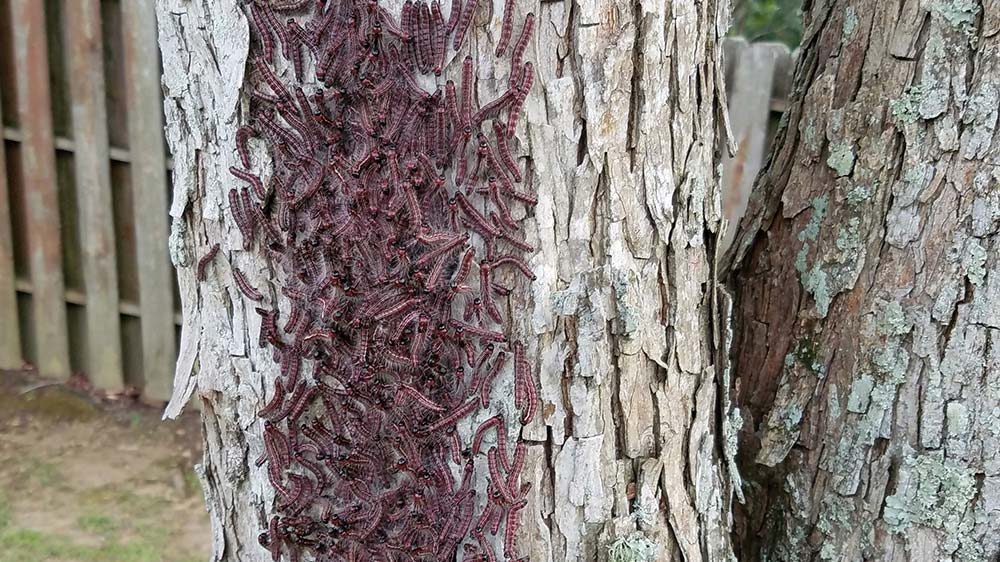 If you are noticing caterpillars and bagworms later on in their life cycle, you should get a hold of a tree care professional. Pressurized spray equipment is usually needed to reach high locations on the tree. Large worm bags need to be removed from the tree completely. If you are set on doing it yourself, try to remove as many bags as you can and throw them away in a sealed bag. If you can't quite remove higher bags, damage them or at least puncture them. Put a bird feeder near the base of the tree to attract birds. The birds will not kill all of the caterpillars, but they will knock down the population some. If you are in Baton Rouge, New Orleans, or somewhere in Louisiana between, contact Big Bark Tree Care to take care of your trees. Hurricane season is upon us yet again. After closely watching subtropical storm Alberto make landfall, it is certainly here. Hurricane preparedness saves lives. We are repeatedly informed to make sure our family has enough food, water, hygiene supplies, batteries, and gas to last in case disaster strikes. We are asking you to take a look at one more thing that could become deadly, your large trees.
If you have a large tree on your property, have one of our arborists take a look at it for free. Healthy trees often have dead wood hanging from limbs that can cause damage in a storm. A large tree could have a lot of branches that generate wind resistance. A few select cuts will reduce the chance of the tree falling during strong winds. It can also look better and allow light to pass through to the plants below, making them healthier and better looking. The most dangerous situation is if you have a dead or dying tree. A large dead tree during a hurricane can kill. It is safer to have dead trees removed immediately. These are the first trees to fall during a storm and tend to be the ones on the news shows firmly through the roof of someone’s home. Even if you are insured and no one gets hurt, it will take months to get everything repaired and replaced. Be on the safe side. If you live in Baton Rouge, New Orleans, or anywhere in Louisiana between, get one of our arborists to inspect your tree’s health today for free. Contact us today to get it scheduled. |
|
Services |
Contact |
|

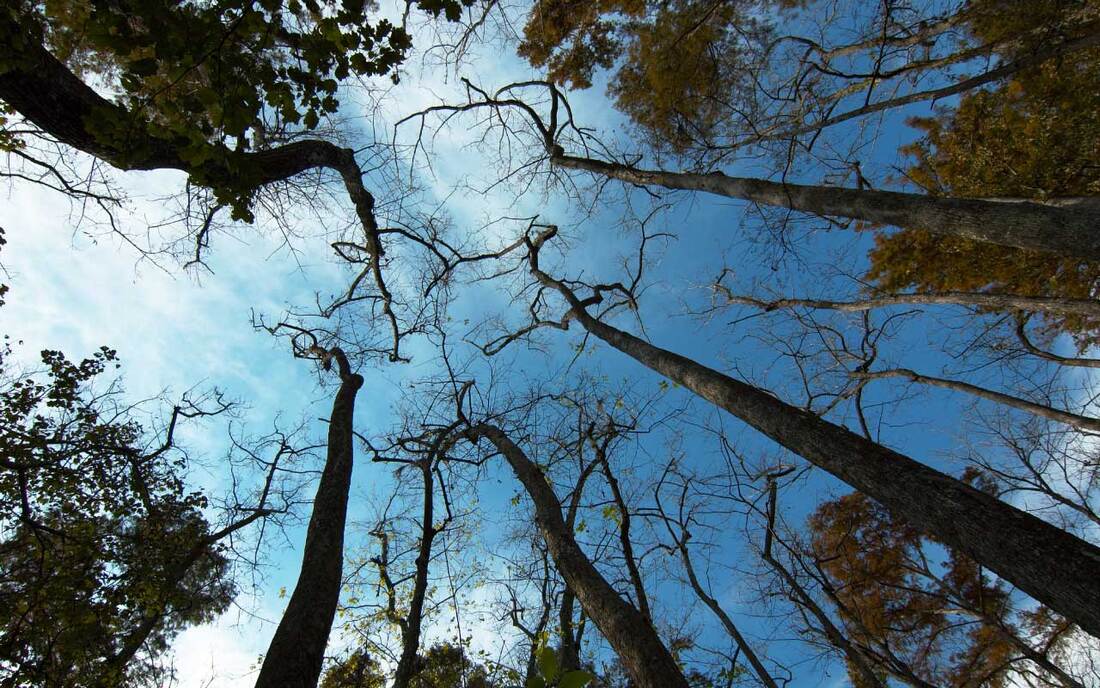
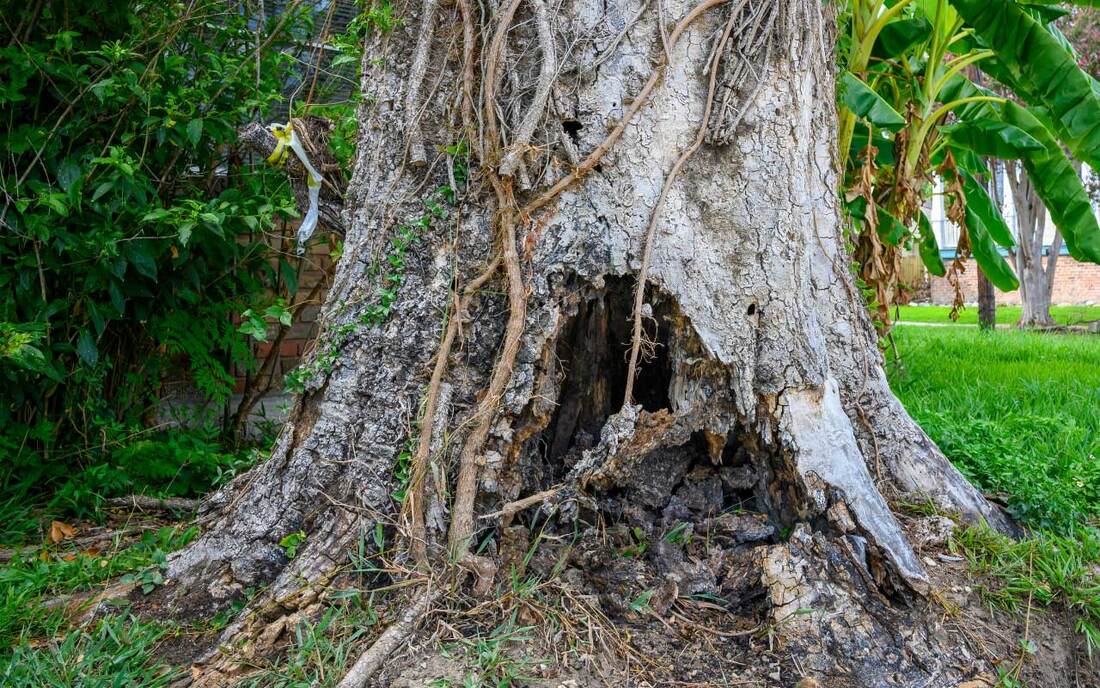


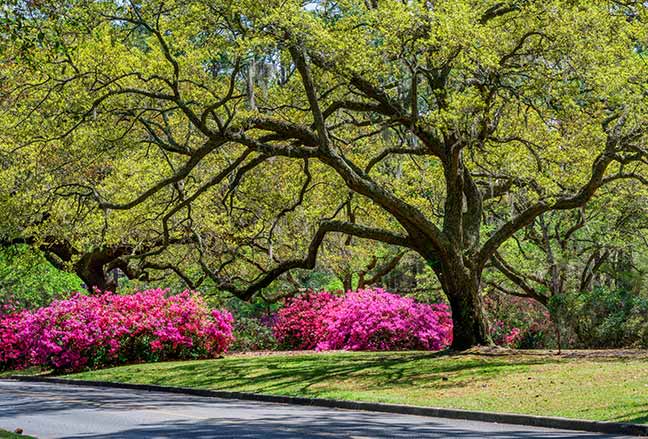
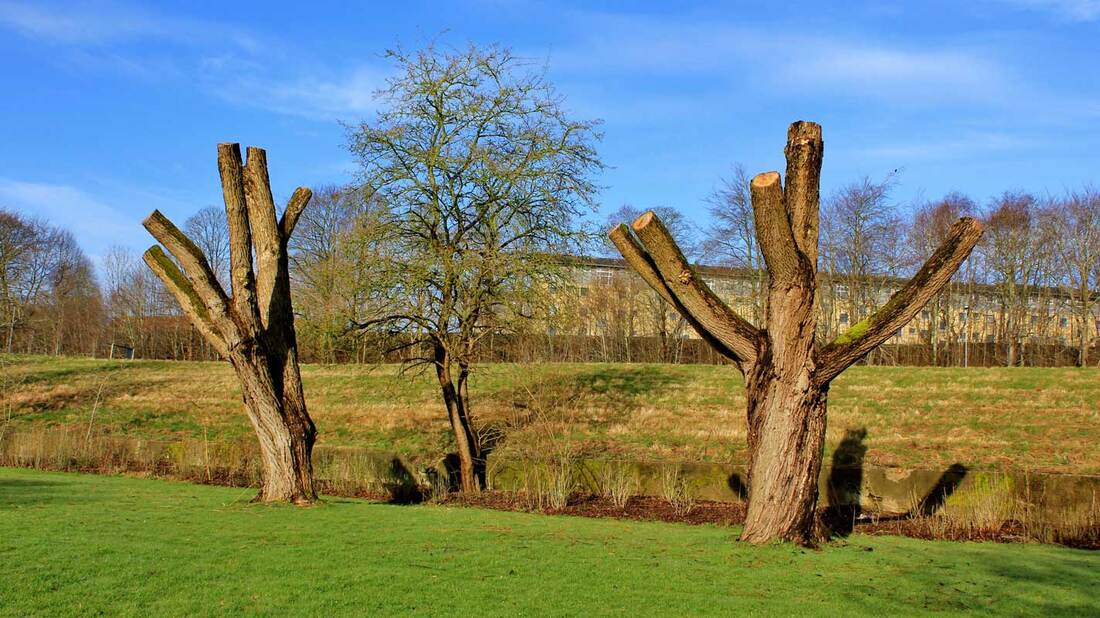
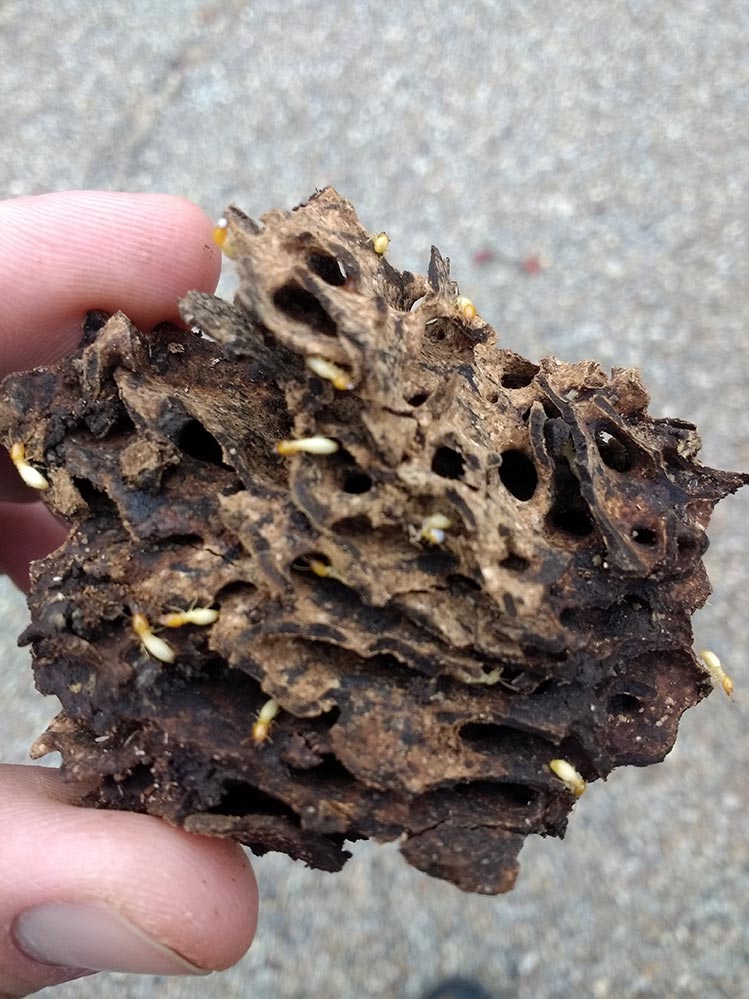
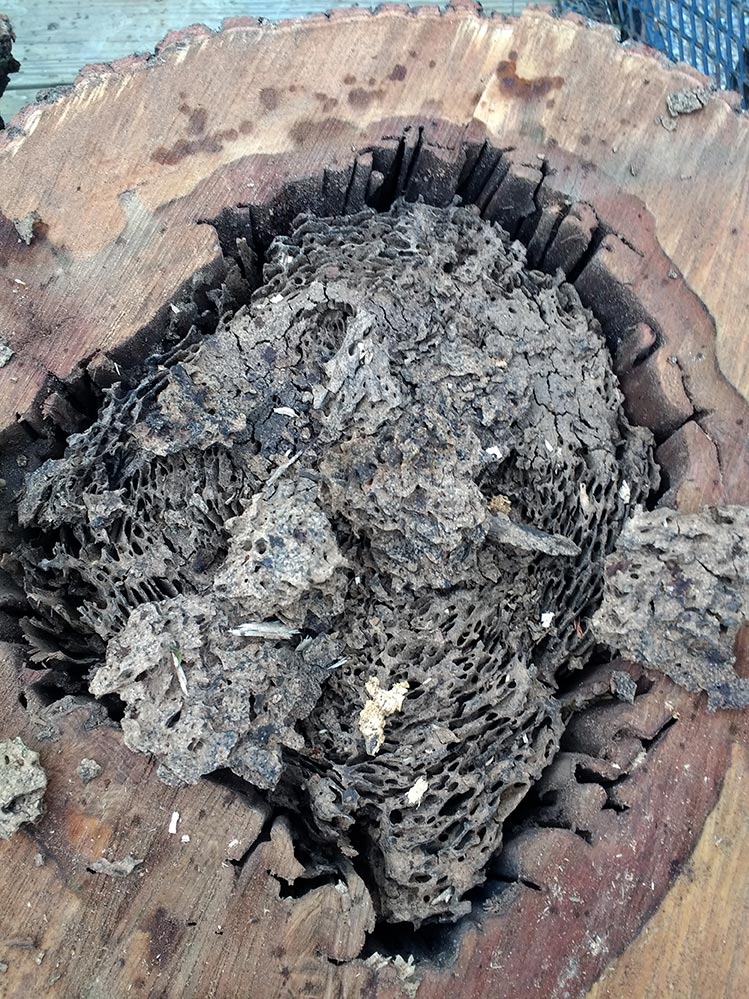

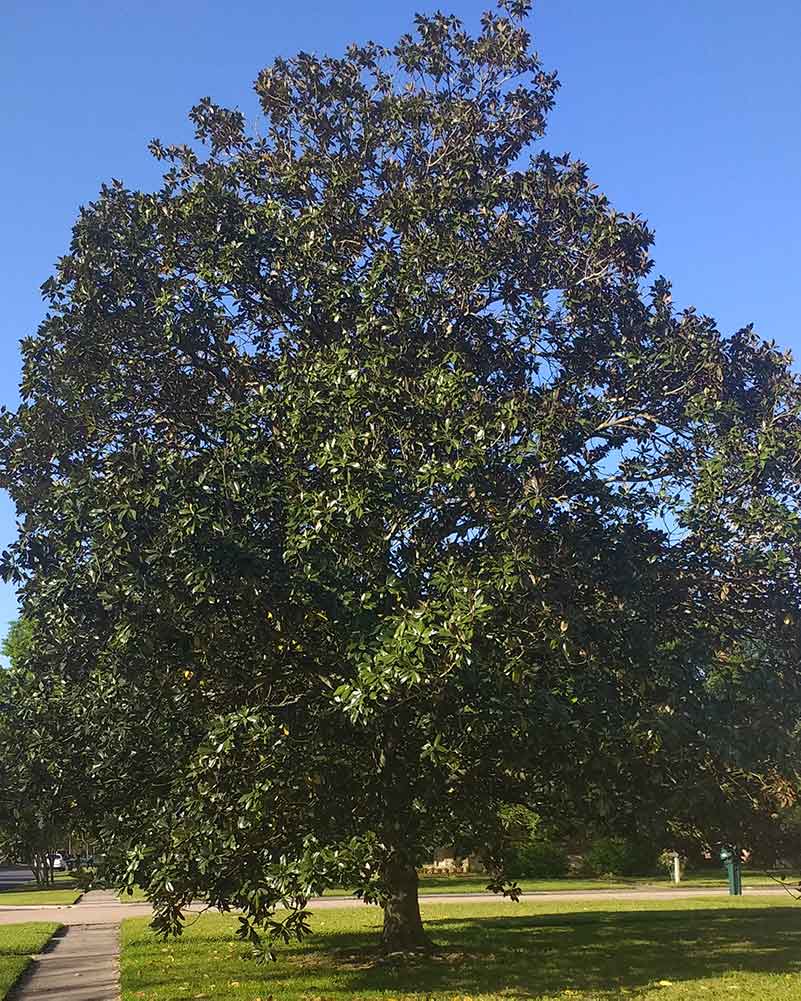
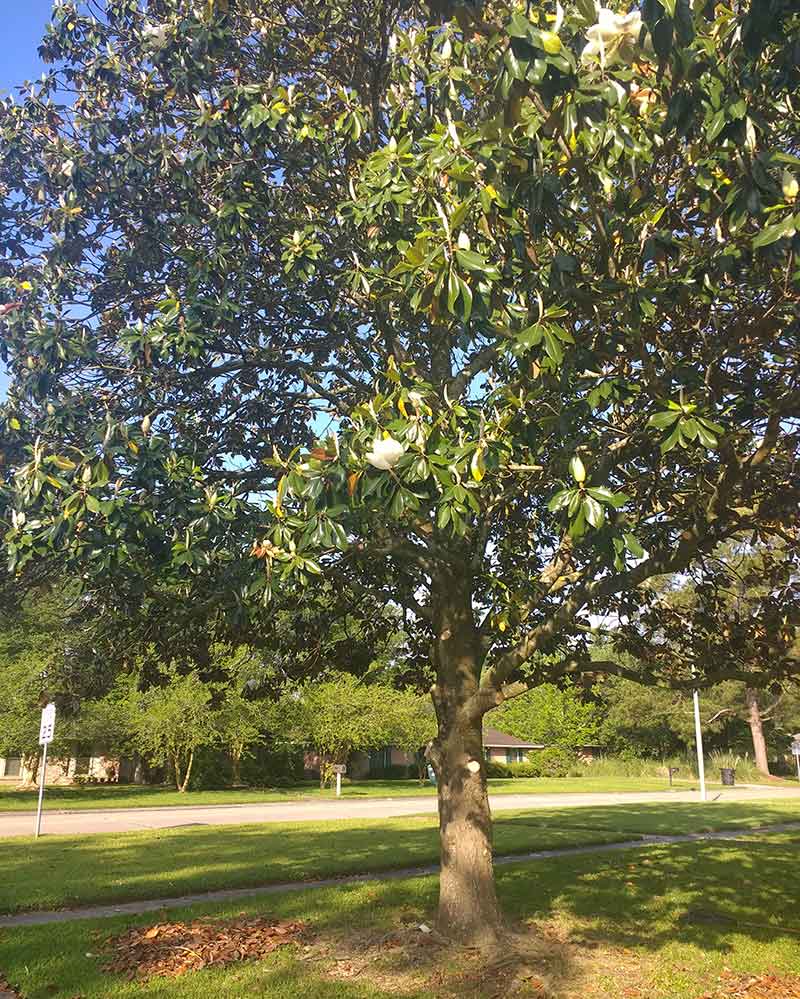
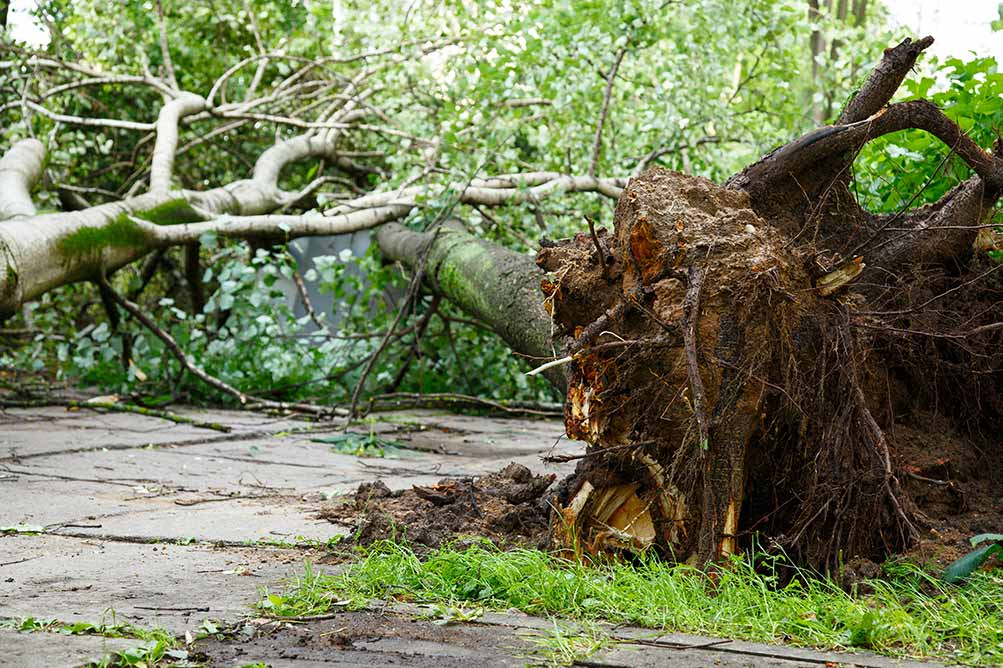
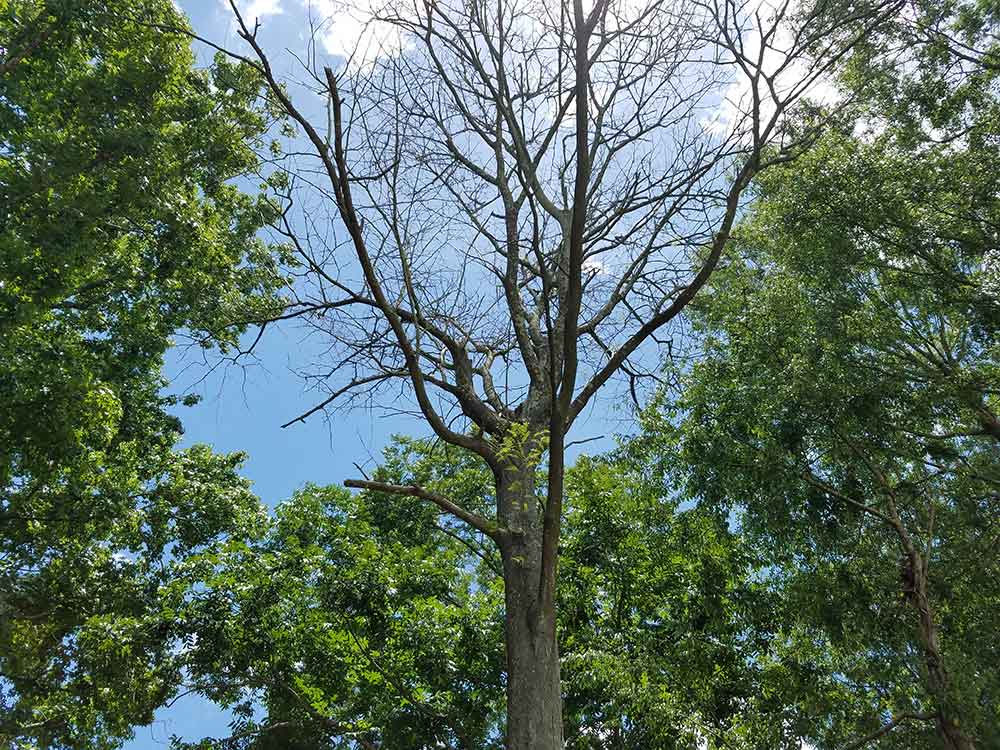
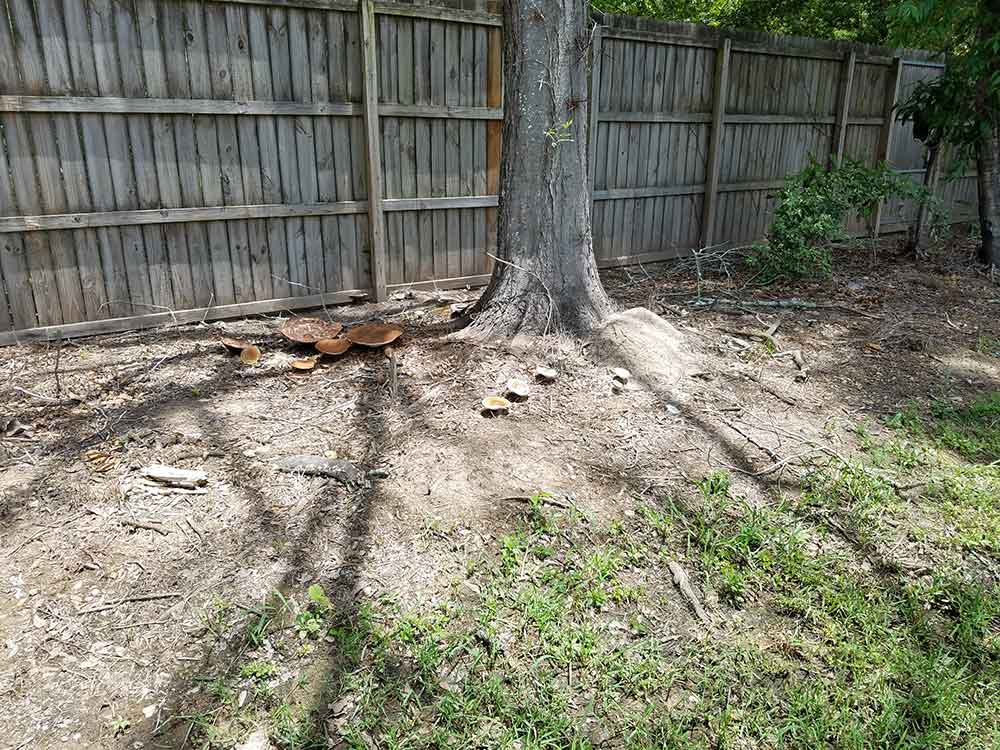
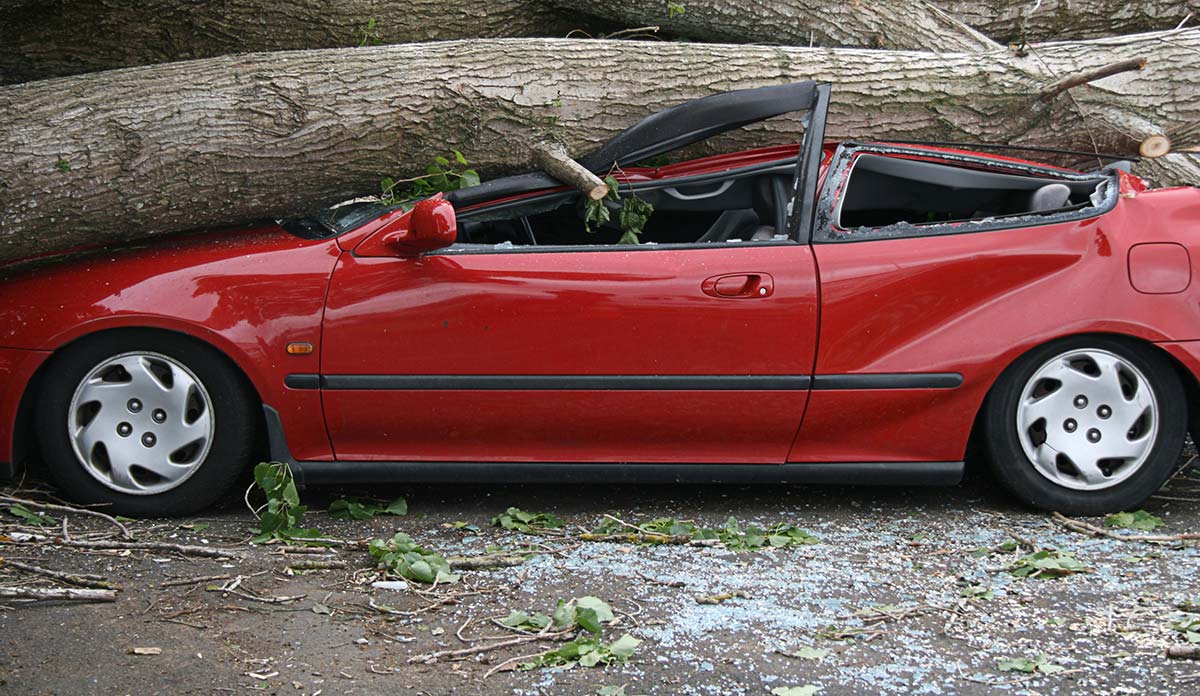

 RSS Feed
RSS Feed
